The AI Gold Rush: California’s Challenge with Bill SB 1047
California is stepping into the spotlight with Senate Bill 1047, a move that could reshape the landscape of artificial intelligence in the state. The bill, known officially as the Safe and Secure Innovation for All Act, focuses on regulating large AI models that have been growing rapidly in both influence and capability. California’s new legislative effort aims to bring oversight and safety to the forefront of AI development , potentially tightening control over Big Tech’s AI innovations.

While the bill has sparked heated debates among tech leaders and lawmakers, its implications could be far-reaching, impacting not just the state but possibly setting a precedent for AI governance in other regions. Advocates argue that the bill is necessary for mitigating the risks posed by powerful AI technologies, whereas critics fear it might stifle innovation and competitiveness in the tech industry.
California’s efforts to regulate AI highlight a growing concern over the ethical and social issues surrounding artificial intelligence. By pushing for accountability and transparency, the state hopes to balance innovation with safety, setting an example for other states and countries considering similar measures. Will this be the start of a new regulatory trend, or will it face resistance from tech giants?
Key Takeaways
- SB 1047 aims to regulate large AI models in California.
- The bill creates a debate about innovation and safety in AI.
- Other regions may follow California’s lead on AI regulation.
Understanding Bill SB 1047
Bill SB 1047 is a significant legislative effort in California aimed at regulating the burgeoning AI industry. This section explores the purpose behind the bill and its impact on the state’s economy.
Legislative Intent and Background
SB 1047, named the Safe and Secure Innovation for Frontier Artificial Intelligence Models Act, was proposed by State Senator Scott Wiener in 2023. The bill aims to address risks associated with new AI technologies. Its goal is to create a framework ensuring safety and security in AI development, as noted in the AI Wild West article .
The bill focuses on establishing guidelines for AI use, emphasizing ethical standards and accountability. Legislators believe that proper oversight is crucial to prevent potential misuse of AI technologies. Supporters argue that transparency is necessary, given AI’s rapid growth. This initiative reflects California’s leadership in tech policy, balancing innovation with safety concerns.
The Role of AI in California’s Economy
Artificial intelligence plays a vital role in California’s economic landscape. The tech industry, driven by AI advancements , contributes significantly to the state’s GDP. Companies leveraging AI are at the forefront of job creation and innovation. However, with opportunities come challenges, necessitating regulatory measures like SB 1047.
AI’s impact spans various sectors, including healthcare, manufacturing, and finance. California remains a hub for tech startups, fostering environments where AI research and development thrive. The California legislature’s passage of the AI safety bill highlights a commitment to shaping responsible AI practices while promoting economic growth. SB 1047 seeks to maintain this balance, ensuring a sustainable and secure future for AI in California.
Implications for Big Tech
Bill SB 1047 in California could reshape how big tech companies manage user data and engage in competitive strategies. Key areas of focus include privacy concerns and shifts in market dynamics.
Privacy and Data Protection
SB 1047 introduces stricter rules regarding users’ privacy and data management. Tech companies must now enhance their data protection measures to comply with the new regulations. This means implementing more robust encryption, transparent data usage policies, and stronger user consent processes.
Firms need to overhaul their existing systems to avoid hefty fines and legal battles. The bill aims to protect users from data breaches and misuse, which have been longstanding issues in the tech industry. Companies may need to allocate significant resources to meet these new standards.
Competition and Market Dynamics
The new legislation could alter competition within the tech market. Smaller companies might gain a foothold, as the larger players adjust to the changes introduced by SB 1047. This could foster innovation and flexibility, potentially disrupting the status quo in big tech.
Meanwhile, larger firms need to reassess their competitive strategies to maintain their market positions. They may also seek new alliances or acquisitions to bolster their compliance capabilities. These dynamics might lead to shifts in market power, affecting both current and future players in the industry.
Industry Response and Lobbying Efforts
California’s Senate Bill 1047 is stirring significant debate in the tech industry. The discussion centers around its potential impact on AI development and the extensive lobbying efforts surrounding it. Various tech companies have expressed concerns, while advocacy groups have employed public relations strategies to influence public and legislative opinion.
Tech Industry’s Stance
Major tech companies are carefully analyzing the implications of SB 1047. Many industry leaders argue that the bill could stifle innovation , as it imposes restrictions on large AI models. This concern is particularly vocal from companies developing cutting-edge AI technologies.
Some executives caution that the legislation could hinder California’s competitive edge in tech. They emphasize the importance of balancing regulation with the ability to innovate freely.
Furthermore, tech firms are actively engaging with legislators to express their viewpoints and suggest modifications. Many companies prefer voluntary guidelines over strict regulation to ensure that AI continues to advance without unnecessary barriers.
Advocacy and Public Relations
In response to the proposed regulations, several advocacy groups have launched PR campaigns. These efforts aim to illustrate both the potential risks and benefits of AI, swaying public opinion in favor of regulation.
Advocacy organizations argue that SB 1047 is essential for ensuring AI safety and accountability . They highlight the need for robust frameworks to protect consumer interests and prevent misuse of powerful AI models.
Public relations campaigns emphasize the necessity of government oversight in AI development. This is aimed at fostering transparency and ethical standards. Collaborative forums and discussions have been set up to bring together policymakers, industry experts, and activists for productive dialogue.
Comparative Legislation
California’s approach to AI regulation through bill SB 1047 highlights the differences between state and federal oversight. It also reflects global regulatory trends as different regions adapt their policies to manage the growth of AI technology.
Federal vs State Oversight
In the United States, both federal and state governments play roles in regulating AI. Federal regulations mainly focus on broad policies that address AI implications on national security and privacy. Agencies like the Federal Trade Commission (FTC) and the National Institute of Standards and Technology (NIST) create guidelines to facilitate safe AI use.
State legislations, such as California’s SB 1047, handle more specific concerns. This bill emphasizes the safe innovation and security of AI models, ensuring that AI developments do not compromise safety or privacy. California often leads state-level AI legislation, setting standards that other states may follow.
The balance between federal and state oversight is critical. While federal agencies set overarching rules, state laws can address unique local concerns, providing tailored solutions for AI regulation. Understanding these differences is vital, as each level of government contributes to AI governance.
Global Regulatory Trends
Globally, countries are taking varied approaches to regulate AI advancements. The European Union’s proposed AI Act aims at creating strict rules for high-risk AI applications, promoting transparency and accountability across member states.
In Asia, countries like China and Japan have their own frameworks. China’s regulations emphasize control and oversight, ensuring that AI development aligns with national interests. Japan focuses on the ethical use and societal implications of AI, encouraging innovation while protecting citizens.
These global regulatory trends show a collective effort to manage the rapid growth of AI technology. Countries are learning from each other’s experiences, creating a patchwork of regulations tailored to their specific needs. This international perspective allows for diverse strategies to govern AI responsibly.
Economic and Social Outcomes
California’s Senate Bill 1047 promises to shape the future of AI in the state. The bill could change investment trends and impact jobs significantly. These changes are central to discussions about the economic and social landscape of California and beyond.
Innovation and Investment Shift
SB 1047 could lead to changes in where companies choose to invest their resources. Tech firms may look elsewhere if California becomes less appealing due to stricter regulations. Some believe this might limit innovation by making the environment less supportive of new ideas. Others argue it might attract companies focused on responsible AI development.
Financial effects would also be significant. Businesses might allocate budgets to enhance compliance with the bill. This can shift the landscape, favoring companies that prioritize safety and responsibility over rapid growth.
Workforce and Employment Impact
The bill could influence employment trends in the tech industry. Companies may reconsider hiring plans. This could lead to jobs moving out of California as firms seek friendlier regulatory environments. Workers might face uncertainty, especially those focusing on AI roles.
However, the bill could also lead to job creation in areas like AI safety and technology ethics. A demand for expertise in compliance and regulation may grow. This could open opportunities for professionals in these fields, ensuring they have a vital role in navigating the evolving tech landscape.
Legal and Ethical Considerations
Understanding the legal and ethical aspects of AI is crucial as California considers SB 1047. This bill aims to address concerns about AI’s impact on security, privacy, and fairness. Familiarity with ethical frameworks and legal precedents is essential for comprehending its potential implications.
Ethical AI Frameworks
Ethical AI focuses on creating systems that are transparent, fair, and accountable. Many organizations follow guidelines to ensure AI technologies respect human rights and privacy. These frameworks often stress the importance of minimizing bias and ensuring that AI systems do not perpetuate discrimination.
Several tech companies have developed their own ethical guidelines while collaborating with global organizations and policy makers. For instance, efforts from the EU emphasize human-centric AI that upholds democratic principles and the rule of law. The central idea is to establish trust by adhering to ethical standards.
Legal Precedents and Interpretations
Legal precedents play a vital role in shaping how AI technologies are governed. Current laws may not fully address AI’s unique challenges, leading to the creation of targeted regulations like SB 1047. In California, existing privacy laws provide a foundation for AI regulations. Legislation such as the California Consumer Privacy Act is often referenced in discussions about data protection.
Legal interpretations can vary, highlighting the complexity of regulating AI. For instance, debates around SB 1047 illustrate the balance between fostering innovation and safeguarding public interests. Lawmakers argue for firm regulations to prevent misuse while ensuring developers have clarity on what is permissible. This ongoing dialogue will likely influence future AI laws.
The Path Forward
California’s SB 1047 presents a new chapter in AI regulation. Analyzing how these policies are implemented and the potential long-term impacts illuminates both opportunities and challenges in controlling AI technology’s immense power.
Implementing Regulatory Policies
Implementing SB 1047 requires a strategic approach that balances innovation with safety. Policymakers must ensure the regulations govern large AI models effectively . This includes setting clear guidelines that tech companies can follow to meet compliance standards. Coordinating with tech leaders is crucial for smooth adoption and minimizing disruption.
Training is another key aspect. Companies need to educate their personnel about the new standards and adjust their operations accordingly. Regular audits by authorities can help maintain compliance, while penalties for non-compliance will enforce accountability. Collaboration with stakeholders will ensure that policies are practical and enforceable, fostering a secure environment for AI development.
Long-Term Strategic Implications
Long-term, SB 1047 could reshape the AI landscape. Companies may adapt by investing more in compliance technologies and processes, influencing how they design AI systems. The legislation might motivate firms to prioritize ethical considerations, which can enhance public trust. There is concern, though, whether this stifles innovation; nonetheless, it promotes responsible development.
Economically, companies that successfully integrate these regulations could gain competitive advantage. By aligning with safety standards, they might appeal to consumers who value security and responsibility in AI products. California might become a model for other states or countries considering similar regulations. This strategic shift could redefine how technology giants operate, emphasizing safety alongside progress.
Frequently Asked Questions
SB 1047 aims to bring new regulations to large AI models in California. This bill could significantly affect tech companies by setting guidelines around innovation, economic growth, privacy, and ethical concerns. It also contrasts with global efforts to regulate AI technologies.
What are the implications of bill SB 1047 for tech companies in California?
Tech companies in California may face new compliance requirements under SB 1047. The bill is designed to regulate large AI models and could lead to increased oversight. Companies might need to invest in compliance infrastructure, which could impact operational costs and strategic planning.
How does SB 1047 intend to regulate artificial intelligence technologies?
SB 1047 seeks to impose guidelines for the use and development of AI. Regulations may include safety protocols and transparency standards for AI systems. The goal is to prevent unintended harm from AI technologies, ensuring they are used responsibly and ethically within the state.
What are the major provisions included in California’s SB 1047?
Key provisions of SB 1047 include requirements for safety assessments, transparency reports, and ethical considerations of AI systems. Companies must demonstrate that their AI technologies do not pose detrimental risks to users, aligning their operations with these standards.
How will SB 1047 impact innovation and economic growth within the tech sector?
The bill may slow down some innovation due to its compliance costs, but it could also encourage safer and more responsible AI developments. While some companies may face challenges adapting, others might find new opportunities to create compliant and trustworthy AI solutions.
What are the privacy and ethical concerns addressed by SB 1047?
SB 1047 emphasizes the importance of protecting user data and ensuring ethical treatment in AI applications. It targets issues like data privacy and algorithmic bias, striving to build systems that respect individual rights and avoid discrimination.
How does California’s SB 1047 compare with AI regulation efforts in other jurisdictions?
California’s approach with SB 1047 is ambitious and aligns with broader international efforts like those seen in the European Union. While the EU has also been active in setting AI regulations, SB 1047 focuses specifically on the interplay between technology, safety, and ethics within the state.
Building better solutions for better business®




